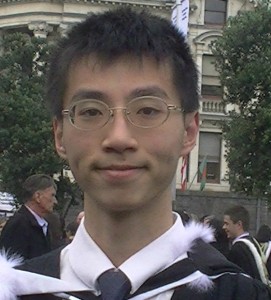Every year, the Department of Statistics offers summer scholarships to a number of students so they can work with our staff on real-world projects. We’ll be profiling them on Stats Chat.
Savannah is working with Professor Alan Lee on a project called Modelling criminal sentencing. Savannah explains:

“The aim of my project is to identify the factors that are influencing sentencing outcomes in our justice system. Sentencing outcomes include both the type of punishment which is handed down – anything from a discharge without conviction to imprisonment – and also the length of the sentence imposed.
“In an ideal situation, the variation we see in sentencing outcomes should be explained purely by the crimes committed and the criminal history of the convicted person. Problems obviously arise when sentencing outcomes are influenced by illegitimate factors such as race. If race (or any other irrelevant factor) remains an influential factor in sentencing, even after the offending and criminal history have been taken into account, then certain groups in our society are being treated unfairly by the justice system, which is a major concern. The purpose of my research is to identify whether or not this is the case.
“This is useful research as the powers of the justice system are immense and criminal sentencing changes lives: not only the life of the person who is convicted but also the lives of that person’s family, friends and wider community. It’s absolutely essential that those powers are applied in the fairest way – without discrimination, in other words.
“I’ve just finished my third year of a BSc/LLB conjoint degree, so I have another two years to go. This is my second summer research project and I’m really enjoying the opportunity to experience another side of statistics.
“At the moment, I don’t have any clear ideas about where I’d like to go after finishing university, but I’m interested in the developing trend towards evidence-based policies in local and national government. I’m hoping to find an internship or something similar so that I can find out some more about the opportunities available.
“On a personal/academic level, the methodical and logical nature of statistics appeals to me. I also enjoy the combination of mathematical and interpretive skills that statistics requires. On another level, I think statistics is really important for society as a whole, because it can show us truths which would otherwise be obscured, either because the data is too overwhelming for us to comprehend or because our own prejudices have been influencing our perception of that data.
“I had a busy start to the summer, travelling to North America on a choir tour. It was loads of fun (but cold!), particularly since I had never been there before. Aside from my research, my plan for the rest of the summer is to relax and rejuvenate prior to hitting the books again in March.”



